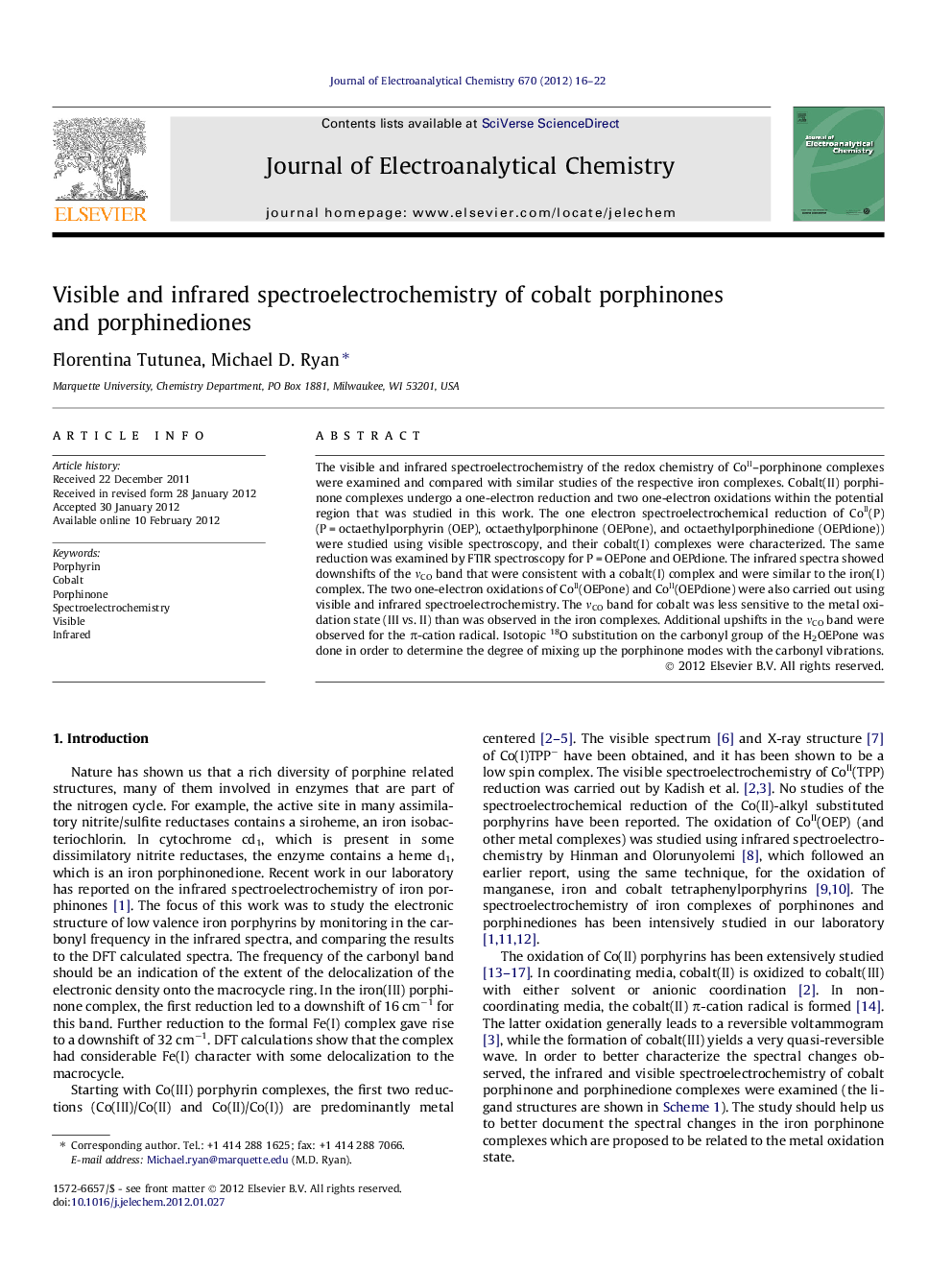| Article ID | Journal | Published Year | Pages | File Type |
|---|---|---|---|---|
| 219330 | Journal of Electroanalytical Chemistry | 2012 | 7 Pages |
The visible and infrared spectroelectrochemistry of the redox chemistry of CoII–porphinone complexes were examined and compared with similar studies of the respective iron complexes. Cobalt(II) porphinone complexes undergo a one-electron reduction and two one-electron oxidations within the potential region that was studied in this work. The one electron spectroelectrochemical reduction of CoII(P) (P = octaethylporphyrin (OEP), octaethylporphinone (OEPone), and octaethylporphinedione (OEPdione)) were studied using visible spectroscopy, and their cobalt(I) complexes were characterized. The same reduction was examined by FTIR spectroscopy for P = OEPone and OEPdione. The infrared spectra showed downshifts of the νCO band that were consistent with a cobalt(I) complex and were similar to the iron(I) complex. The two one-electron oxidations of CoII(OEPone) and CoII(OEPdione) were also carried out using visible and infrared spectroelectrochemistry. The νCO band for cobalt was less sensitive to the metal oxidation state (III vs. II) than was observed in the iron complexes. Additional upshifts in the νCO band were observed for the π-cation radical. Isotopic 18O substitution on the carbonyl group of the H2OEPone was done in order to determine the degree of mixing up the porphinone modes with the carbonyl vibrations.
Graphical abstractFigure optionsDownload full-size imageDownload as PowerPoint slideHighlights► The visible spectroelectrochemistry of cobalt porphinones was studied in THF. ► Additional structural information was obtained using IR spectroelectrochemistry. ► These results were compared when possible with DFT calculations. ► Significant shifts in the carbonyl bands of the complexes were observed. ► The cobalt results were compared with the previously reported iron studies.
